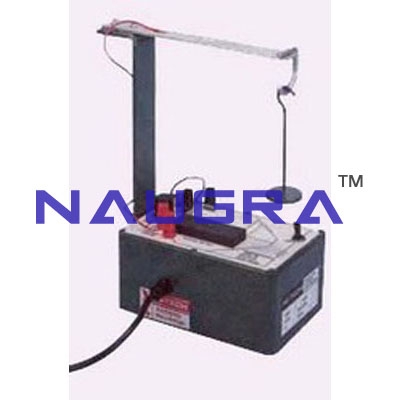- Civil Lab Mechanical Lab Engineering Lab Equipments
- sales@didacticlabequipments.com

CAT NO: DIDACTICNLE-Export-053017
Electrical Resistance Strain Gauge- Engineering Lab Training Systems.
Features
Low cost effective teaching
Bench mounted
Self contained
Wheatstone bridge and temperature compensation dummy gauge included
Introduction to strain gauges
Bending and Torsion included
Optional extras for Tension and
Compression
Three year warranty
Range of Experiments
To show the application of strain gauges in the measurement of stress, due to bending and torsion
To demonstrate the use of a Wheatstone Bridge in measuring change of resistance.
With
the optional extras to show other methods of temperature compensation
in conjunction with tension and compression specimens.
Description
The
apparatus has been designed to illustrate the basic features of
electrical resistance strain gauges and their application to measurement
of strain and the derivation of stress levels, in bending, torsion,
tension and compression.
An alloy cantilever has a single gauge
bonded onto its surface, and an identical gauge is fixed to an
unstressed piece of the same material for temperature compensation. The
two gauges form part of a Wheatstone Bridge which has an apex or
balancing potentiometer, and whose meter is calibrated directly in
microstrains. The cantilever is loaded by weights hung from its free
end, a weight hanger is included.
To extend the scope of the
apparatus the cantilever can be replaced by a torsion bar having two
gauges bonded orthogonally at 45º
For a complete study of strain
gauging two optional extra accessories demonstrate averaging techniques
for tension and compression specimens.
This equipment is part of a
range designed to both demonstrate and experimentally confirm basic
engineering principles. Great care has been given to each item so as to
provide wide experimental scope without unduly complicating or
compromising the design. Each piece of apparatus is self-contained and
compact. Setting up time is minimal, and all measurements are made with
the simplest possible instrumentation, so that the student involvement
is purely with the engineering principles being taught.
A
complete instruction manual is provided describing the apparatus, its
application, experimental procedure and typical test results.
